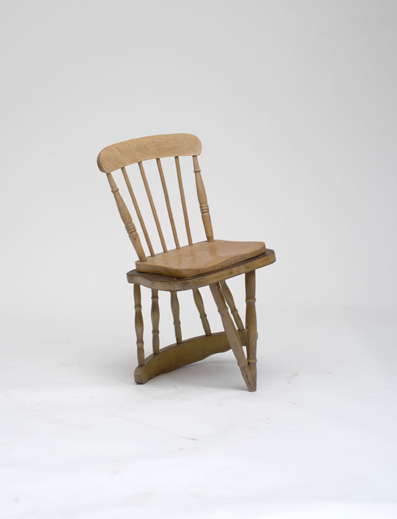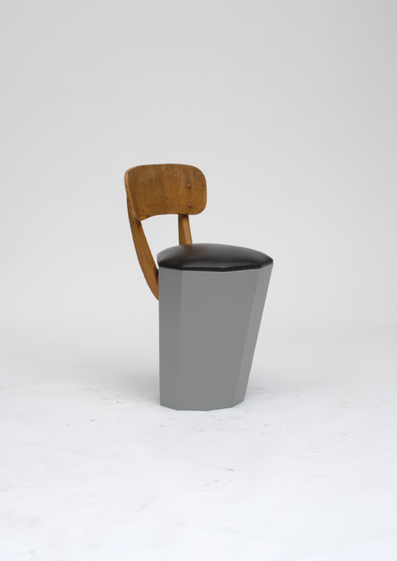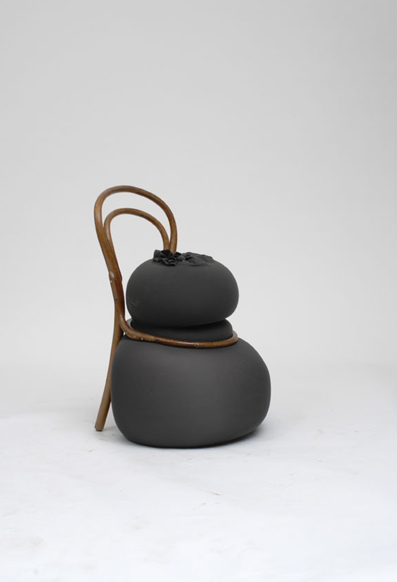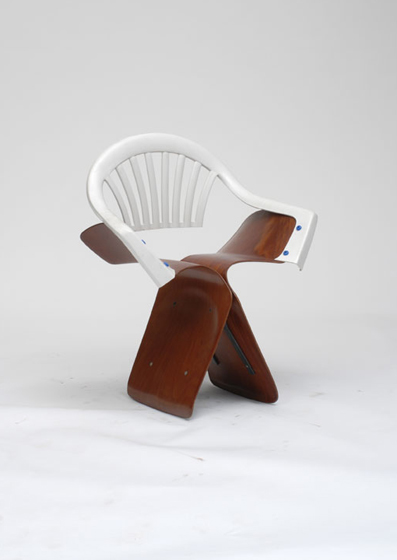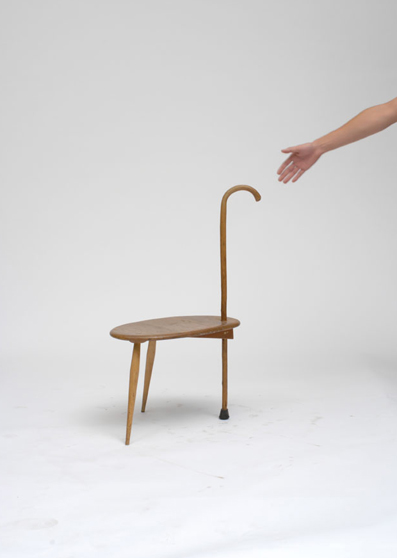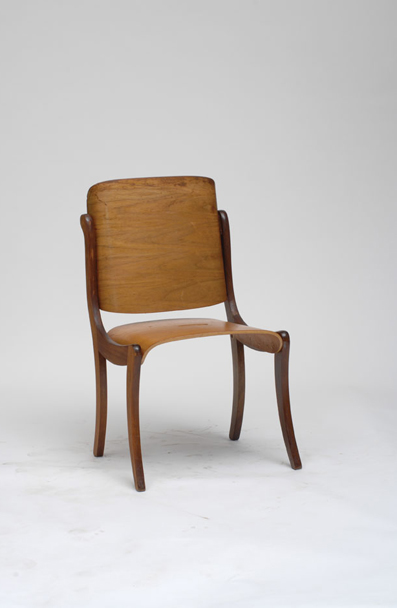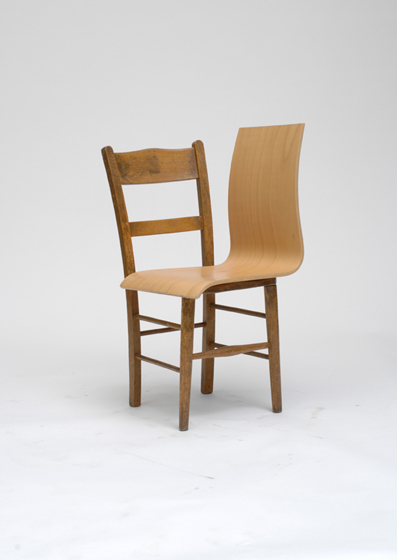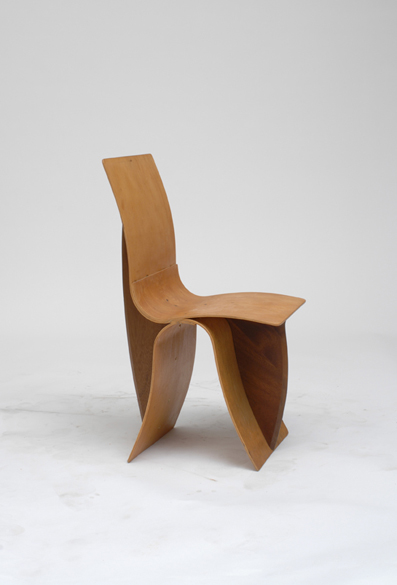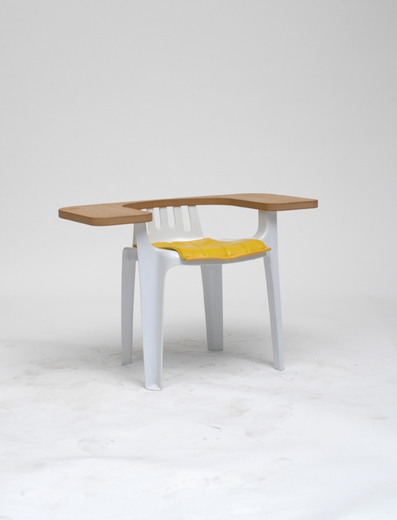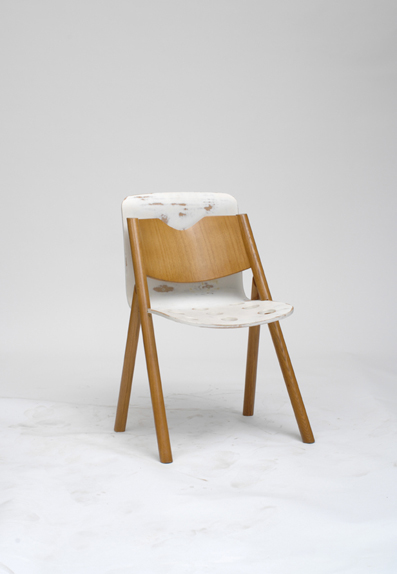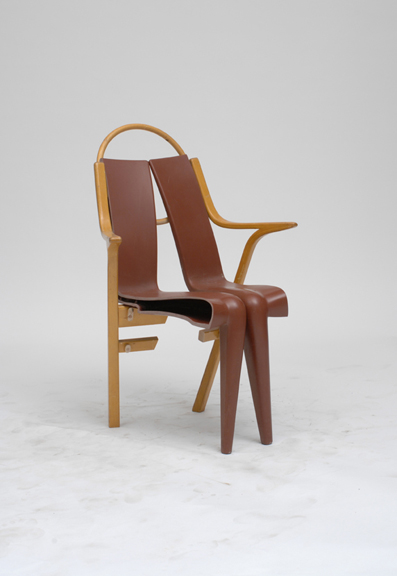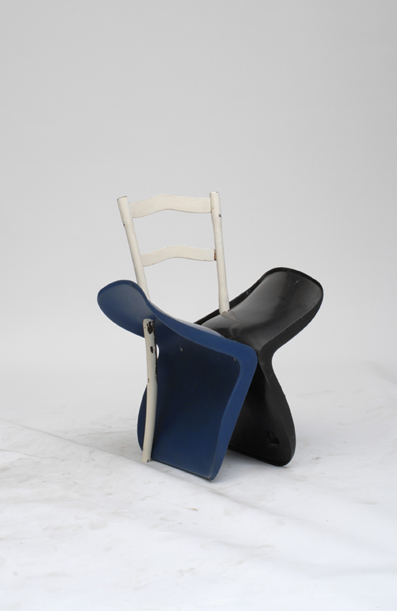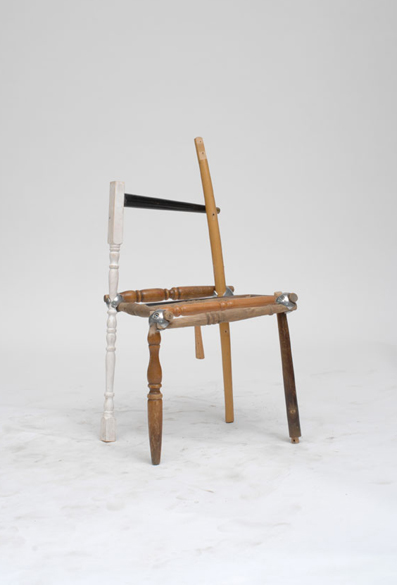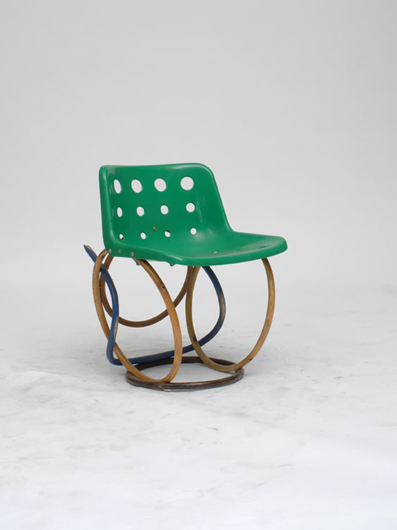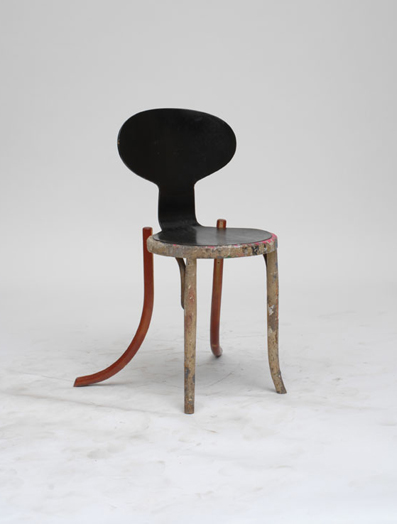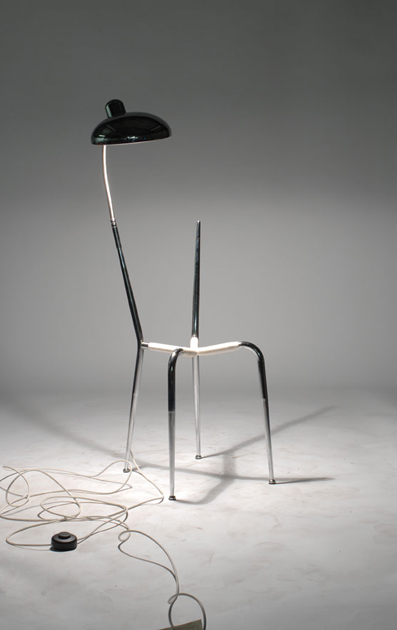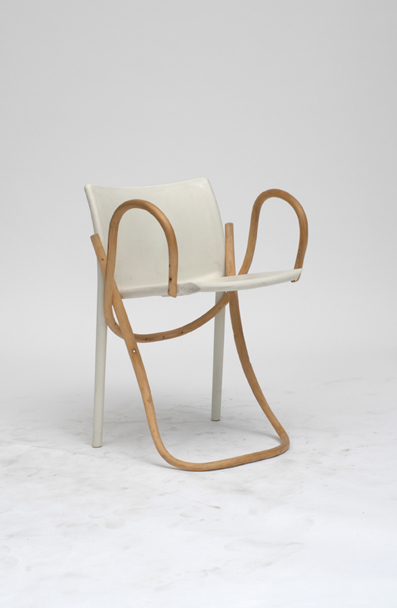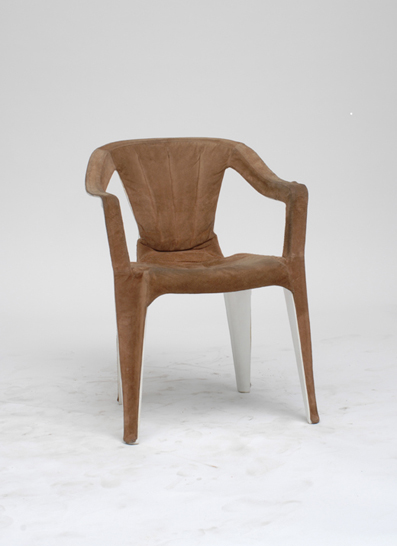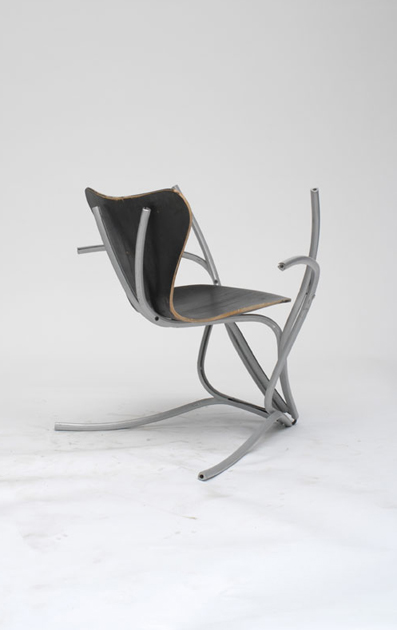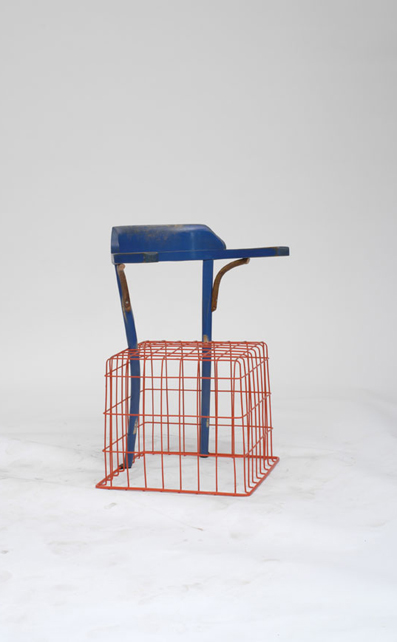100 Chairs in 100 Days
The Process of Making One Hundred Chairs by Martino Gamper
I didn’t make one hundred chairs just for myself or even in an effort to rescue a few hundred unwanted chairs from the streets. The motivation was the methodology: the process of making, of producing and absolutely not striving for the perfect one. This kind of making was very much about restrictions rather than freedom. The restrictions were key: the material, the style or the design of the found chairs and the time available — just a 100 days. Each new chair had to be unique, that’s what kept me working toward the elusive one-hundredth chair.
I collected discarded chairs from London streets (or more frequently, friends’ homes) over a period of about two years. My intention was to investigate the potential of creating useful new chairs by blending together the stylistic and structural elements of the found ones. The process produced something like a three-dimensional sketchbook, a collection of possibilities. I wanted to question the idea of there being an innate superiority in the one-off and used this hybrid technique to demonstrate the difficulty of any one design being objectively judged The Best. I also hope my chairs illustrate — and celebrate — the geographical, historical and human resonance of design: what can they tell us about their place of origin or their previous sociological context and even their previous owners? For me, the stories behind the chairs are as important as their style or even their function.
I wanted the project to stimulate a new form of design-thinking and to provoke debate about the value, functionality and the appropriateness of style for certain types of chair. What happens to the status and potential of a plastic garden chair when it is upholstered with luxurious yellow suede? The approach is elastic, highlighting the importance of contextual origin and enabling the creative potential of random individual elements spontaneously thrown together. The process of personal action that leads towards making rather than hesitating.
Taken from the book 100 Chairs in 100 Days, published by Dent-De-Leone, 2007.
Photography ©Martino Gamper & åbäke
100 Chairs in 100 Days, Cromwell Place
2 – 15 October 2007
5 Cromwell Place, London, Uk
The exhibition was made possible with the generous help of Blackburn Associates Limited Design Project and Åbäke.
Photography ©Angus Mill
100 Chairs in 100 Days, The NRW-Forum
23 May – 05 Jul 2009
The NRW-Forum Dusseldorf, De
As part of UFO: Blurring the boundaries between art and design.
Where does design end and art begin? Charles Eames, the most influential designer of the mid-twentieth century, said that ‘design is an expression of purpose. It may (if it is good enough) later be judged as art.’ Contemporary young designers see the matter more pragmatically. According to the Spanish designer Jaime Hayon, ‘there is no longer a clear border between product design and art.’ The most recent answer to this question is inherent in the new phrase ‘design-art’. Artists like Franz West and others investigate the changing functions of sculpture and in so doing dissolve the borders between art and design, between ‘free’ and ‘applied’ creation, by allowing hybrids from other areas to develop.
In the field of design, on the other hand, designers like Ron Arad or Marc Newson are increasingly discovering the sculptural qualities of design. They are distancing themselves from a conditionality of design – namely its function and the inherent possibility of reproducing something any number of times – and are creating unique items or small editions. The borders between ‘fine’ and ‘decorative’ art is becoming more blurred. The artists/designers featuring in this exhibition include David Adjaye – Ron Arad – John Armleder – Richard Artschwager – Ronan + Erwan Bouroullec – Hussein Chalayan – Frédéric Dedelley – Martino Gamper – Liam Gillick – Rodney Graham – Johanna Grawunder – Konstantin Grcic – Zaha Hadid – Studio Job – Donald Judd – Mona Hatoum – Arik Levy – Ross Lovegrove – Marc Newson – Jorge Pardo – Tom Price – Richard Prince – Rolf Sachs – Tejo Remy – Ettore Sottsass – Haim Steinbach – Kram/Weisshaar – Marcel Wanders – Franz West – Andrea Zittel.
Taken from the press release.
www.nrw-forum.de
100 Chairs in 100 Days, Triennale Design Museum
6 Oct – 8 Nov 2009
Triennale Design Museum, Milano, It
Stanze e Camere + 100 Chairs in 100 Days
In Collaboration with Gallery Nilufar
Curated by Silvana Annicchiarico
www.triennaledesignmuseum.it
100 Chairs in 100 Days, YBCA
Jul 6 – Oct 3 2010
YBCA, San Francisco, Usa
TechnoCRAFT explores how the boundary between the role of the designer and the consumer is disappearing. Curated by acclaimed designer Yves Behar, the exhibition traces the current trend in design away from fixed objects toward open "design platforms" that invite people to participate in the creative process. Selected works span the spectrum from intentionally collaborative (such as platforms where individuals can customize their products) to outsider hacks, where "finished" products are adapted or modified by the user. Special attention is paid to the intersection of technology and craft that encourages an unprecedented level of user participation with profound implications for the future of design and experience making.
Taken from the press release.
www.ybca.org
100 Chairs en 100 Jours, Eglise Saint-Pierre
24 Nov 2010 – 27 Feb 2011
Englise Saint-Pierre, Site Le Corbusier de Firminy, Fr
As part of Cite du Design Biennale International de Design de Saint Etienne 2010
www.sitelecorbusier.com
www.citedudesign.com
Photography ©Lionel Catelan
If Gio Only Knew
12 – 16 Jun 2007
Design Miami/Basel - Design Performance Basel, Ch
In this performance Martino continues his interest in re-appropriating used furniture, in this case furniture designed by Gio Ponti for the Hotel Parco dei Principi, Sorrento. This is the first time he uses such iconic and classic design pieces. With his transformative powers and the ability to improvise Martino seeks to extend the live of a classic piece of design beyond it’s museum like existence. The outcome is always unknown, the process is spontaneous and freewheeling and the result is a variety of objects, each with its own attitude, some functional some pathetic, and some even beautiful. Even the most abject of the remade pieces will have an euphoria inspired by the escape of destiny. Taken from the press release.
Gio Ponti furniture courtesy of Nilufar Gallery, Milano.

